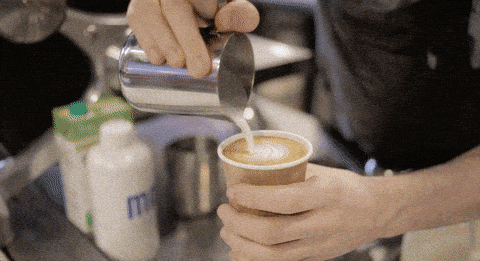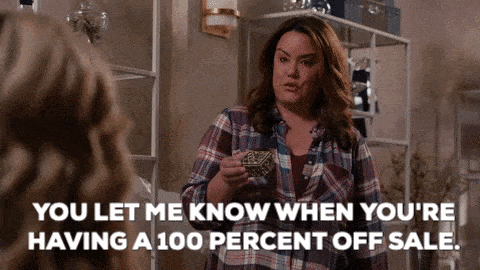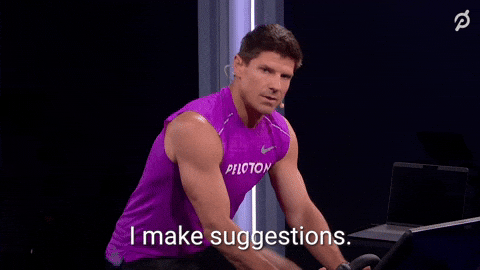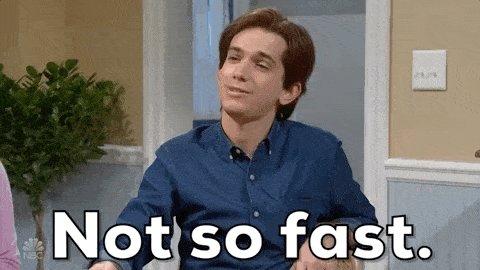- The Ladder
- Posts
- Does “Pay-What-You-Feel” Actually Work?
Does “Pay-What-You-Feel” Actually Work?
💸 You're Missing Out On More Than You Might Think

👋 Hello fellow Ladderers!
This week we’re taking a look into how “Pay-What-You-Feel” pricing works with consumers and how you can use it to your advantage.
But before we jump into that, I wondered, do you have a favourite charity you support the work of?
Would you like me to donate $50 to them?
Great - Well you’re in luck.
I’m looking to learn all about you, your challenges, where you’re at in your career and more for some research I’m conducting.
I need 30 minutes of your time for an informal chat - and in exchange for your time, I’ll make that $50 donation to your favourite change-makers.
I have absolutely nothing to sell you (fear not friend) 🫰
Click below to book a time that works for you 👇️
If you missed last week’s wrap you can catch-up here ⏪
I hope you enjoy.
There must be some kinda way out of here / Said the joker to the thief,


PS. If someone sent this to you, click below to subscribe. And give them a hug from me 🤗
🗞️ WTF Happened This Week?
😂 Google is paying reddit $60 Million to tell its users to eat glue
💀 When Microsoft went down, it took DuckDuckGo, ChatGPT and more with it.
🤳 Employee Influencers are here, but most employers haven’t a clue what to do about it.
🛩️ Inspired by Pepsi's infamous 90’s jet fighter battle, Liquid Death is giving away a very real L-39 jet.
📍Humane, the startup behind that crummy AI Pin wearable, is looking for a buyer. Good Luck Guys.
🪧 The most controversial billboards of 2024, so far.
📱 We’ll take it from here, TikTok launches Performance Automation for advertisers
🔗 The Best Bits of LinkedIn This Week
Thank faux those fake OOH things are over - Now we’re doing Pop-Up Trucks! 🚛
Taylor Swift is selling age care… Sort of 👵
Here’s what Phil Knight set out for Nike as their founding values: nailed it 💪
Is this 6 year olds’ drawing the greatest perfume ad of all time? It’s a real contender 🌹
The power of alliances and why you shouldn’t mess with lactating mums, especially on mothers day 🍼
Monzo nailed what it is to make a great ad - Tom Goodwin gave it that little extra push 👉️
🧰 We’d Never Blame These Tools
🤓 Ivee.so - Find and partner with B2B experts and influencers in your industry in just a few clicks.
📉 UptimeMonster.com - Monitor the status of your site and alert you of any issues instantly.
🤑 PayOnceApps.com - Tired of endless subscriptions? Discover the best one-time purchase apps for web, Windows, and Mac.
🎥 ScreenStory.io - Turn boring screen recordings into masterpieces in 2 minutes.
🔎 StatSigSessionReplay - Get crystal clear insights into how users experience your product.
🎙️ LemonSpeak.com - Turn your podcast into marketing content, ready for posting in minutes.
Today’s feature
What The Science Says About “Pay-What-You-Feel”?
⏱️ ~ 6 minutes 8 seconds read
I’m standing in line at a bustling inner-city café, you know the kind. The barista’s beard is wild, but the latte art is meticulously poured. It’s all blonde wood, exposed bricks and pendant lights.
It’s 8:55am, and I’m anxiously checking my watch, knowing I have a 9am meeting upstairs. But there’s zero chance I’ll survive this meeting without caffeine charging through me.
Finally, I get to the front, order my regular coffee (long black thank you), and bam there it is – “seven dollars, please” as she swings the Square kiosk around to me.
Seven dollars for a cup of coffee! Is this filthy-whiskered barista a world champion on tour or something?!?

That’s a mocking smile right there
Begrudgingly, I rage-pay with a heavy eye-roll and step aside to continue biting my nails.
This scenario, dear readers, underscores a major conundrum in business: pricing.
Get it right and people flock. Get it wrong and they say “WTF?”
So, how much is too much? How little is too little? Everyone has a different view, especially your customers.
Today we’re going to take a look at some wonderful studies and insights around the often misunderstood and poorly executed “Pay What You Want” model.
You may have seen this before in restaurants, book stores, wellness or health services, charities, community or social good organisations.
It’s not a bad idea - but it can cost you a lot of money if it’s not done for the right reasons and the right way.
If done right it can have customers beating down your door. Let’s dive in.
CAUGHT BETWEEN TWO CUSTOMERS
Imagine you’ve walked into a cosy little bookstore that also serves coffee, all in the spirit of supporting local artists and creating a community hub.
You pick up a book, grab a coffee, and the friendly owner tells you, "Pay whatever you feel like."
At first, it feels liberating – no price tags, no judgement - I love this.
You pay $10 bucks, that feels about right. Feeling good about your contribution and getting a bit of a bargain too; you’re out the door.
Now, let’s flip the script. Imagine you’re that bookstore owner.
Day in and day out, you watch as customers pay wildly varying amounts for the same products.
Although most people buy something, some pay generously, but many others, perhaps unintentionally, pay much less than what the book (plus the coffee) is worth.
Unfortunately the big spenders do not compensate for the bargain buyers.

So why is this?
Well, more often than not, the “Pay What You Like” model either ends up confusing customers, because when left to their own devices, people are often unsure what constitutes a fair price.
Or, they pay an amount that they feel is just enough to absolve them of any guilt - and sadly this is not very much 😒
This is supported by multiple studies across different products and contexts, that demonstrate giving customers the flexibility to "pay what they like" often results in them paying lower average prices compared to standard fixed pricing models (references at the end).
There’s a rather famous example, where Panera Bread Co. opened its first “pay-what-you-want” cafés in Missouri and reported about 20% of the visitors to the cafes leave more than the suggested amount, 20% leave less, and 60% pay what is suggested. Not bad 🤌
However, after opening another four of these cafés and nine months later, the cafés reported are only making about 60% of the revenue of a regular, full-paying location. And as a bonus, they’re now a favourite hang-out for the homeless, so Panera had to hire a bouncer to shoo them away.
Yikes 😬
CHOOSE YOUR OWN ADVENTURE
So how do we get this right? Clearly giving customers an option is appreciated, and studies show it can even increase conversions by up to 52%! But how do we do it without losing our shirt?
Enter the “Pick-Your-Price” model – It’s all about controlled choice.
An example in the wild
Instead of leaving the price point completely open, provide your customers with guidance, upper and lower limits, and even an idea of what most people might pay.
This works because people value agency and a sense of control. They also believe themselves to be the better judge of just about everything (humans 🙄), yet paradoxically they are hard-wired to appreciate the wisdom of the crowd (more on that below).

Yes sir! 🫡
Here’s how you master this pricing tactic to impressive effect:
Don’t Get Too Clever: Offer a limited set of prices, no more than three or four. Customers appreciate the choice but no-one wants to be overwhelmed by too many options.
Anchor With a Baseline: Your current fixed price plus minimum gross margin, should be the lowest option. This way, you’re safeguarding your minimum revenue while giving customers the perception of control. Start with a discount on your regular price, then the regular price and add a couple of higher options to see how it impacts sales.
Leverage Social Proof: There’s a reason why you’ve seen “most popular” badge on pricing pages. Social proof is one of the most powerful behavioural biases humans are subject to. Use this to your advantage by labelling one of the higher price points as the most chosen. This subtle nudge can steer even the most hard-nosed spendthrifts further up the price points.
Tailor to Your Audience: You know your customer base. Are they bargain hunters or do they crave premium experiences? Adjust your pricing tiers accordingly. Remember that what people choose to pay is also a reflection of how they prefer to see themselves.
Test and Adapt: Implement the model in phases and closely monitor the results. Are your conversions and sales volume increasing? Are customers happier? Use this feedback to fine-tune your options continually.
Pick-Your-Price is how you can have your cake and eat it too; it often comes with improved conversions and sales overall, whilst also providing protections against the penny-pinchers.
But before you start printing off “Choose Your Price” labels for everything, be aware this is not a pricing tactic that works in all situations and definitely has some warning stickers on the side.

Firstly, Pick-your-price is rarely used. It could be that the novelty of it is what attracts sales. Once it’s commonly used the effect could wear off - so take it easy with deploying this one. Perhaps keep this one in your back pocket for special events or promotions.
Regulars shoppers are going to stitch you up. That’s just how we humans be.
Also you might find this will still under-perform (on average sale price) when people are buying many products at once (e.g. groceries, fast fashion retail) - as we have a bit of a tendency to “game the system” if we can (see above).
Finally, don’t use this tactic if you sell what you might call a “grudge” purchase, think insurance etc. I think you can understand why. Would you pay more for your insurance if you didn’t have to?
OK, LET’S GIVE THIS A SPIN 🛞
Now that you understand the psychology of “Pick-Your-Price”, it’s time to think about how you can implement and give this a whirl in your own business.
Start here:
Gather Customer Insights: Conduct surveys or direct interviews to understand how customers perceive value and their willingness to pay different prices. This data is the other aspect of your pricing methodology to your cost base approach. You need both.
Educate Your Team: Make sure your sales and customer service teams are on board and can explain the new pricing model trial confidently to customers. Their enthusiasm and clarity will make a big difference.
Run a Pilot Program: Select a product or service and test the “Pick-Your-Price” model. Monitor sales data closely, gather customer feedback specifically in comparison to control, and assess the overall impact on sales, revenue and NPS/ satisfaction or returns.
Promote Transparently: Highlight the benefits of the “Pick-Your-Price” model in your communications both internal and external. Emphasise that this approach is designed to offer more choice and flexibility, putting power in the hands of the customer.
Analyse and Iterate: Regularly review sales data and customer feedback to adjust the price options as needed. This iterative approach will help you find the optimal pricing strategy over time.
By thoughtfully trialing and implementing the “Pick-Your-Price” model, you can offer customers the freedom they crave while ensuring your business remains profitable.
It’s a win-win scenario where everyone leaves the counter happy, caffeinated, and ready to tackle their day – Who knows, they might even pay more than $7 next time?
That’s it for this week.
Have you seen “Pick-Your-Price” or indeed “Pay-What-You-Like” deployed before?
How did you respond? Are you generous or a little on the spend-thrift side?
Do you have a product in mind that you think a promotional trial for this might work?
Hit reply, I’d love to hear your thoughts.
If you enjoyed this edition, please forward it to a friend who’s looking to level-up their behavioural science game - they’ll love you for it (and I will too) ⏭️ 💌
References:
🙋 Got a Question? I Might Just Have Some Answers.
Each week I'm here to answer any question you might have in the space of marketing, strategy, leadership, digital and everything in between.
Just hit 'reply' and let me know what's on your mind, and I'll share my answer with the community the very next week, including a special shout out (if you're into that, otherwise we can keep it anon) 🥸
Reply